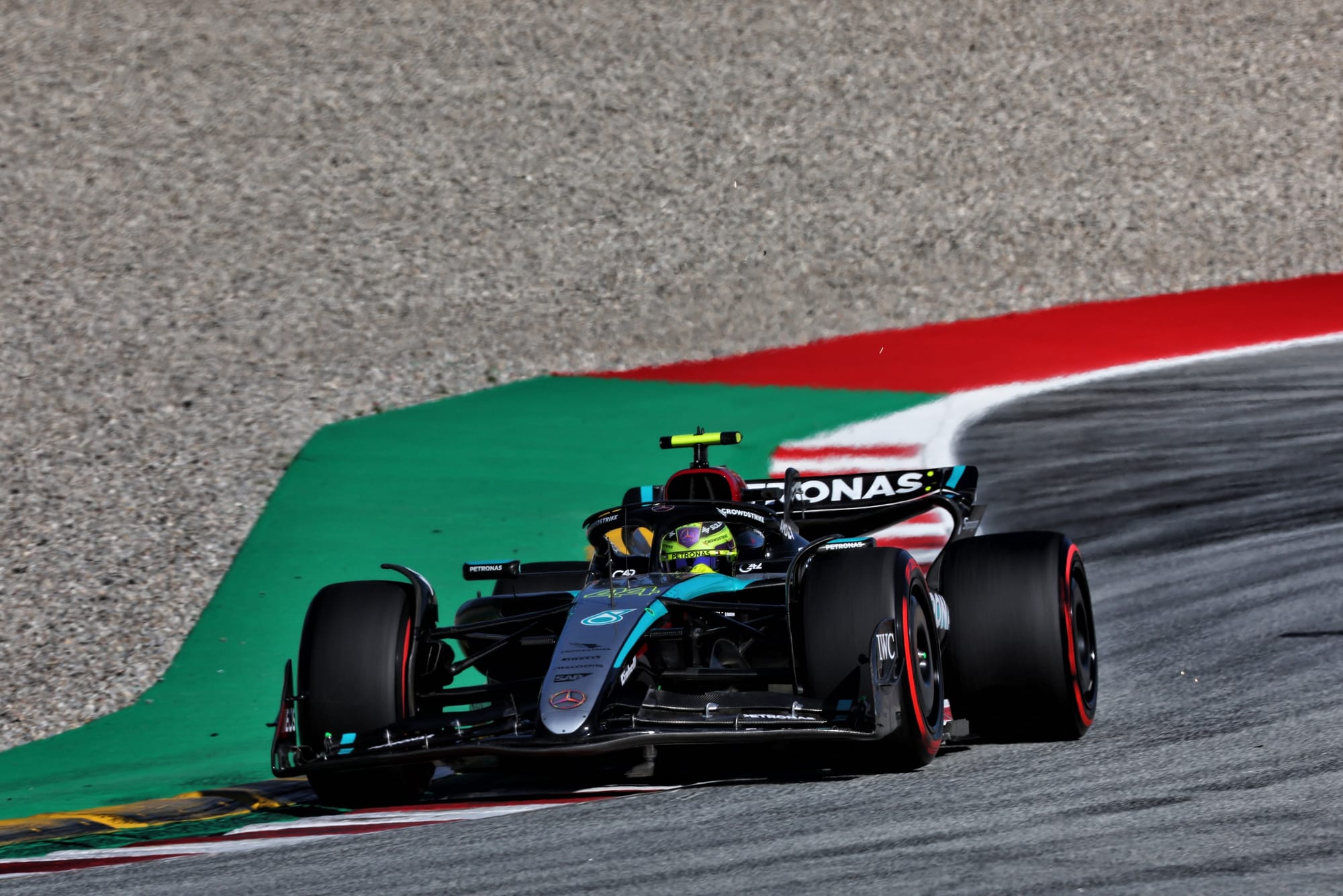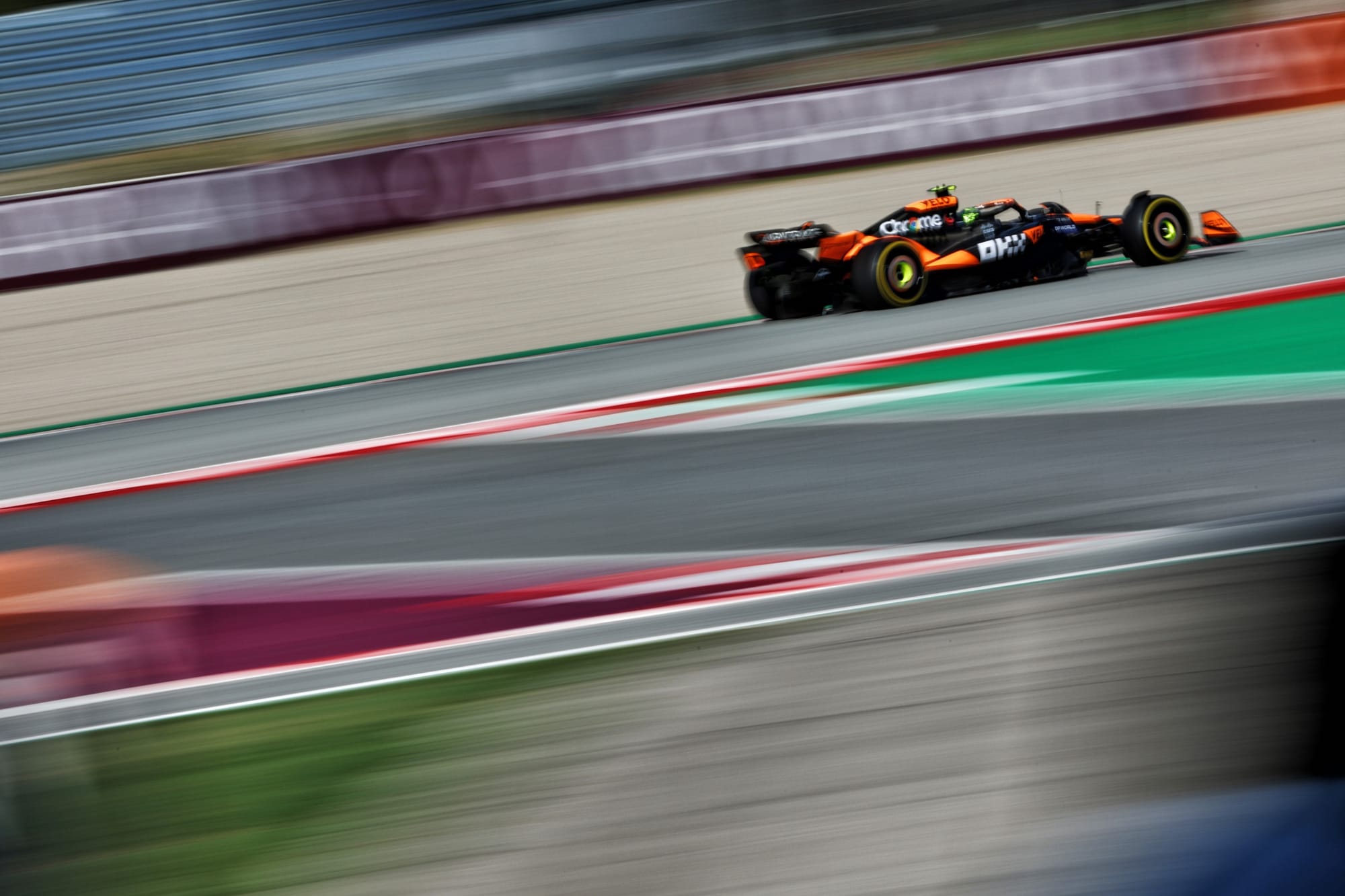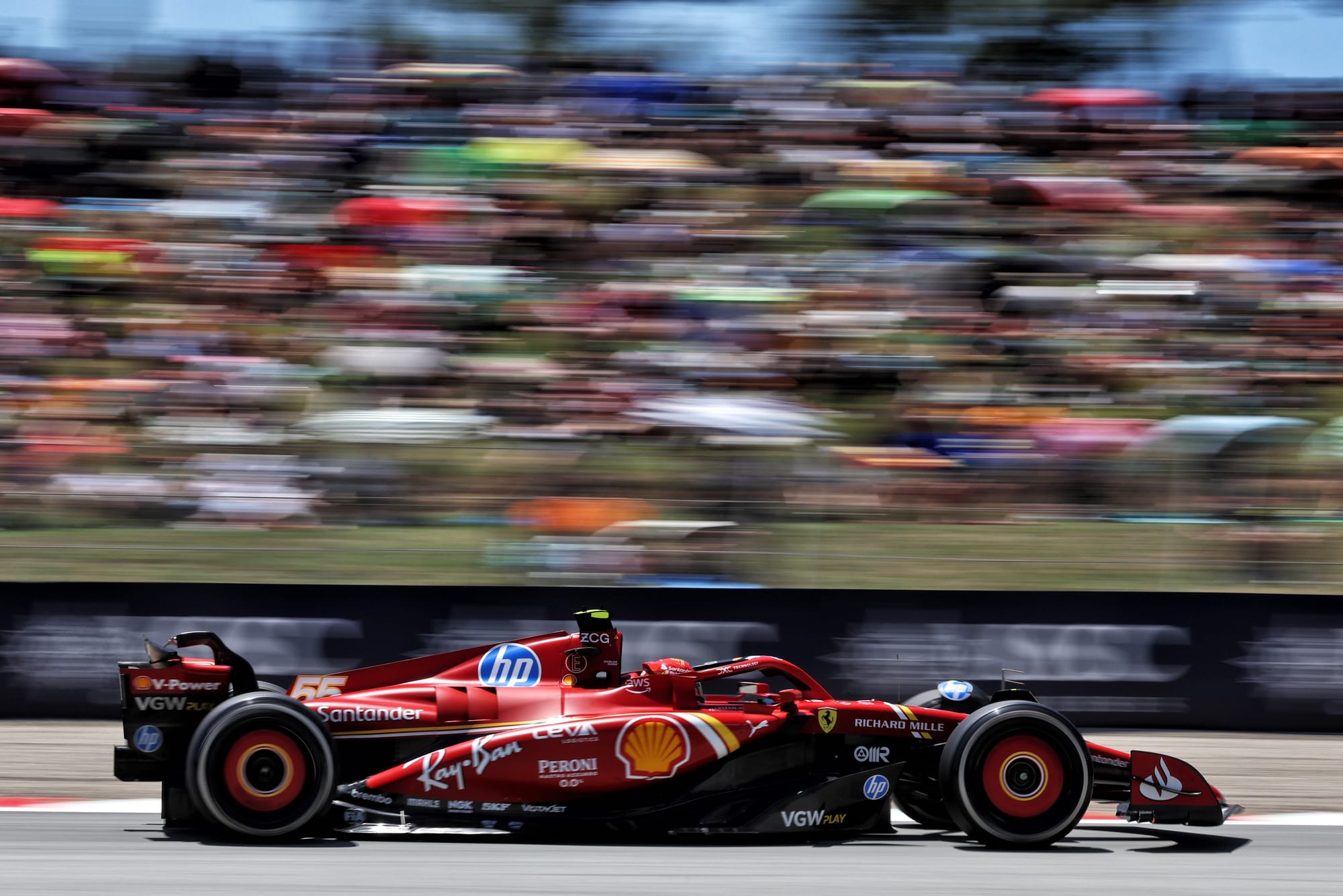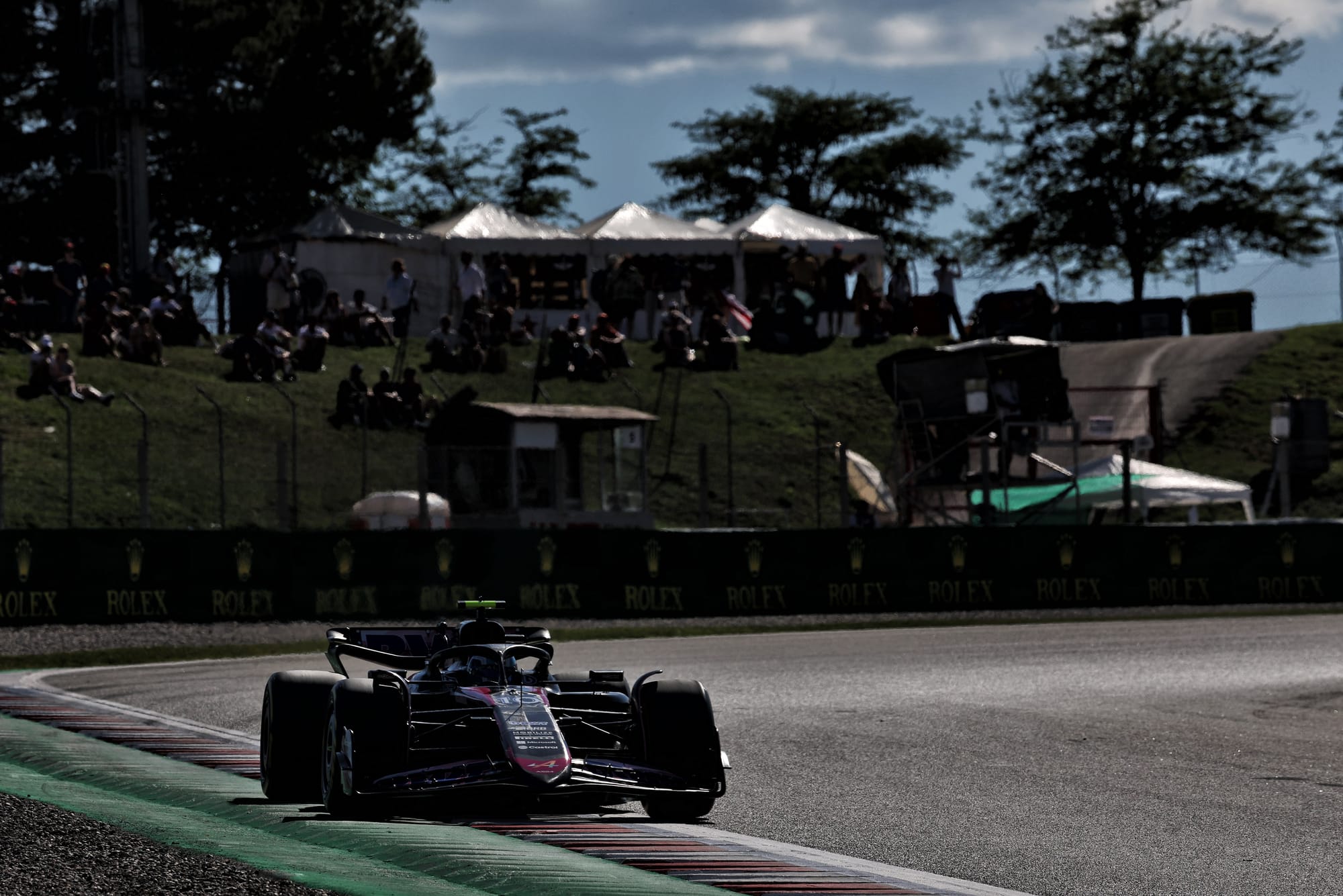Whoa! This was a fascinating session, as the extreme demands of a super-hot Barcelona circuit gave us some very interesting patterns, not all of them expected.
It also exaggerated a trait of this year’s crop of cars which may be fundamental to how the pack has closed up to Red Bull in recent races. Because far from giving the RB20 the chance to spread its wings, as many were expecting, the circuit has presented much the same balance difficulties for the team as all those recent races. The Red Bull certainly looks no faster than Ferrari or McLaren and maybe only slightly faster than Mercedes.
Lewis Hamilton headed the times, but his run – like that of fourth-fastest Pierre Gasly – came just as the track grip was ramping up from the falling late afternoon temperatures. In that crucial three-four minutes later they ran, the track temperature dropped by an apparently crucial 3C.
Trying to equalise for track conditions is an imprecise science, but the Mercedes looked at the very least competitive here – which will surely be a relief to the team on the back of its pole-setting Montreal form. The worry was that the limited speed range of that track’s corners may have given a false picture and that the more serious demands of Barcelona would expose it. But while no car looked well-balanced here, the Mercedes actually looked better than most.
That balance difficulty faced by everyone is the interesting thread which, if unpicked, may give us the insight into understanding what is happening here.
A track temperature of 46C-47C around a circuit with such long, fast corners is always going to be horribly punishing of the tyres, particularly the left-front. This is especially so given Pirelli stipulated a very high minimum pressure of 25psi for those fronts. Making it even more of a nightmare for the front rubber is that all the cars, to a greater or lesser extent, were suffering understeer.
It has become apparent through the season, as the teams have come to be able to run these cars ever-lower, that there is a bigger conflict than ever before between low- and high-speed corner behaviour. The cars have become more critically sensitive as everyone is tapping into the rewards of the dramatically increased underbody downforce available in that tiny gap of clearance at the tunnel’s throat.
Getting any front-end bite at low speed tends to make them an unstable handful at high speed.
The front wings of the cars become too effective at high speed as the car lowers, but not effective enough at low speed. The Mercedes W15 used to be the poster boy for this bad behaviour and that’s what the new front wing was targeting. It’s why front wing flexibility has suddenly become an even more intensely studied trait. You want the wing to begin stalling at high speeds because it’s trying to work too powerfully as it gets into ground effect.

That window of opportunity is tiny this year – way smaller than in the first two years of these regulations.
As teams have found ways of running lower, so this has exposed a new set of problems. The aforementioned aero balance is one. The other is still having the suspension give enough compliance over bumps – and the Red Bull is the poster boy for that problem.
Barcelona seems to be showing us that the RB20’s downforce advantage is no longer a significant one – and that the aero balance issues suffered by everyone may actually be even more acute on the Red Bull than, say, the Ferrari or McLaren. Possibly exacerbated by that suspension intolerance of the super-low ride heights.
It used to be that the Red Bull’s underbody allowed it to run lower than the others without getting to the bouncing threshold. But now that everyone is able to run comparably low, the pattern has changed.
Putting the best sector times together, Max Verstappen is marginally faster than Lando Norris’s McLaren at the head of the field. But that probably means less than usual because here there is always a trade-off to be made between how hard to push in sector one and how much grip you have by the end of the lap.

Putting the sectors together in the optimum way is not simply about being as fast as possible in each of them. That was made even more the case on Friday by the extreme track temperatures and the aforementioned balance conflicts.
Verstappen spent much of the session complaining of understeer, particularly through Turns 3 and 4. He was super-fast through the big aero test of Campsa (Turn 9), but – on the state of play on Friday – if the RB20 is a potential pole car, it looks like it would take all of Verstappen’s dexterity to pull that lap out of it.
The difficulty in finding that balance was underlined by the struggle of Sergio Perez, who commented: “We made a lot of changes and lost track of them. We need to pick all the bits out of it tonight.”
The McLaren and Ferrari looked a little more benign and consistent. Norris and Carlos Sainz did a soft-tyred long run at the same time. The Ferrari was consistently quicker initially but after seven laps the McLaren began to claw back everything the Ferrari had gained. It suggested two evenly matched cars being driven with a slightly different emphasis on tyre use.

George Russell – whose qualifying simulation lap was spoilt by a big oversteer snap – was troubled by his brakes on the long runs, so the Mercedes picture has to be taken from Hamilton’s run a little later than those of Verstappen, Norris and Sainz. It didn’t look quite as quick, but was in the ballpark.
So the prospects are quite fascinating. The temperature is forecast to be less extreme for the rest of the weekend so perhaps the very heavy degradation we saw on Friday will be lessened. But those extremes were very useful in suggesting what is driving the performance picture. Aerodynamic balance and super-high downforce are just not compatible. But that huge downforce is tantalisingly there, so the teams are chasing it. Hard.

Perhaps the position of Gasly’s Alpine, even though it was flattered by his running order, shows what can be achieved by prioritising balance. Certainly the RB’s upgrade – which should in theory have been an aerodynamically powerful one – only seems to have given it balance difficulties.
Then there’s Aston Martin, struggling badly, around a second off the pace, with Fernando Alonso ruing: “We are far from our balance window. We have a lot to work out.”
Barcelona has sprung a surprise on everyone. It’s truly fascinating.


